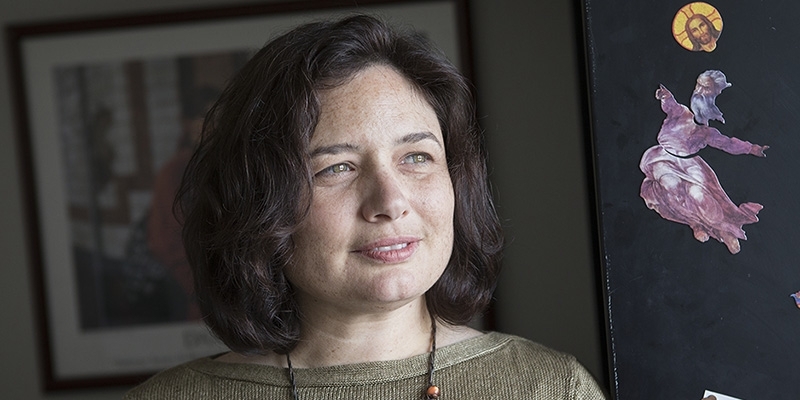Supporting autism in the workplace
Thomas Edwards, associate professor in the College of Engineering, is taking the issue of high unemployment among people on the autism spectrum into his classroom.

Sometimes you hit the wrong button on the elevator and spend a few extra minutes getting to your desired floor. Other times, you hit the wrong button and find life-changing inspiration.
That’s what happened for Thomas Edwards, an associate professor in the College of Engineering and the Director of the Engineering Management Program. Edwards, who is currently working on a doctoral degree in management at Pace University, accidentally took the elevator to the 16th floor instead of the 18th one day on his way to the cafeteria at Pace.
On the 16th floor, he found the Pace University Center for Teaching and Research in Autism. Throughout his life, Edwards watched one of his family members on the autism spectrum struggle with the issue of unemployment—approximately 80 percent of people on the spectrum are unemployed. Finally, something occurred to him.
“Maybe the way that we supervise these individuals is part of the problem,” Edwards said.
For years, Edwards has been interested in learning more about how to incorporate different management techniques to better accommodate individuals on the autism spectrum in the workplace. His interest took a backseat to his doctoral studies—until those elevator doors opened, that is.
Edwards thought ending up on the 16th floor was just interesting. His friend said it was a sign.
After his mistaken visit, he was able to connect with Mary Cohen, the director of the center. In turn, Cohen introduced the work of another researcher, Francesca Happé. Through Happé’s work, Edwards discovered that individuals on the autism spectrum have deeply specific skills and weak central coherence, which means that they experience difficulty getting the gist, or connecting the dots, on their own.
“I started thinking...how many things do we tell young managers to do assumes that employees are able to connect the dots?” Edwards said. “When you apply techniques to someone who doesn’t get the gist, it’s not going to work. You might think you’re doing the right thing, but your approach is flawed, not the employee.”
Through Pace’s center, Edwards accessed literature and research focused on autism. Specifically, he searched for research to support which leadership techniques assume employees have strong central coherence. He wasn’t able to find anything.
“It hasn’t been researched, and had that been my field, that would have been a doctoral dissertation. But that’s not my field, I’m not a psychologist. I needed to do something practical,” said Edwards.
From years of being a manager and teaching, Edwards developed a management toolkit—nine things that you need to be able to do to be successful as a supervisor. Then, he turned it upside down.
“I started having discussions with my students about the toolkit. I would explain what weak central coherence means and ask what things on the list they think have strong central coherence baked into it,” Edwards said. “Come up with a list and I’ll figure out how to navigate it.”
Those discussions with his students became crucial to his next step. Edwards developed a pilot workshop designed to help supervisors understand the concept of weak central coherence and what it means to use specific leadership skills, like delegation and accountability, to work with individuals who may require extra support.
However, Edwards knows that he needs more to really spur change.
“What I did with that workshop and pilot test, that’s not science. That’s me as a practicing manager trying to come up with an answer fast,” Edwards said. “There’s nothing wrong with that, but you have to realize that’s not science and we need the science.”
Edwards had an eye-opening experience last year when he was invited to speak at the international software company SAP’s Autism at Work conference. SAP is dedicated to integrating neurodiverse individuals into the workplace in a way that adds value to the company—by utilizing their specific skills to improve products and innovate. At the conference, Edwards learned what researchers were discovering.
Research supports that a somewhat significant number of software developers are likely to be on the autism spectrum, meaning that it is extremely likely that the managers Edwards trains will supervise these individuals at some point in their careers.
Some scientific findings are being developed around what managing techniques work and do not work with this community.
“That was my commitment to the audience at SAP,” Edwards said. “I said, ‘You develop the science, and I’m ready to deploy that in the classroom so that my students can practice it in the workplace.’”


